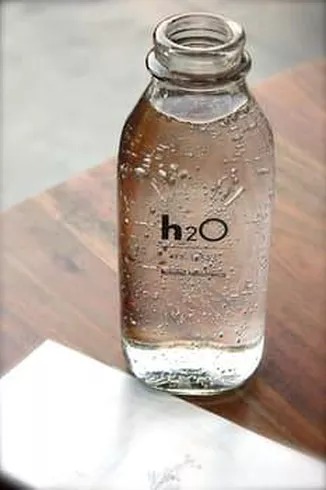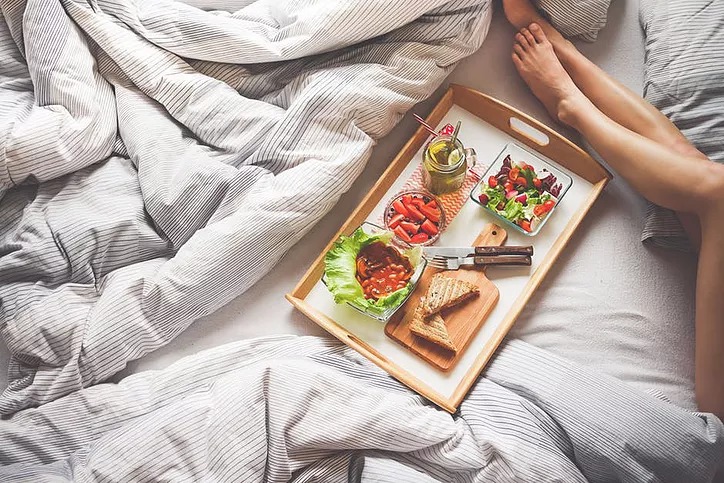
Stephanie Abou-Antoun (Bch. Hum Ntr.) For more nutrition information follow Stephanie on Instagram, Facebook and WordPress @FoodHermetica.
The first few weeks of being home with your baby was great, wasn’t it?
They would sleep a lot and you could sit back with a cup of tea, enjoying lunch in peace. But now you’re tired all the time and your hair is falling out. During those rare baby naps, you’re taking care of chores instead of taking care of yourself.
You’ve heard the term hangry? No one needs a hangry mummy, or a mombie (mum zombie). If you don’t take care of yourself, how can you possibly have the energy to take care of the biggest love of your life, your little one?
When you were pregnant you knew you had to eat healthy for the growing baby. After birth it’s no different. In fact, you need to eat more now, especially if you’re breast feeding (an extra 200kj/day).
But how do you eat, drink and prepare healthy food with a babe in arms, laundry to fold and a life to get on with?
I’m not saying throw your baby to the dogs and run off to the Bahamas for some R’n’R. but here are some handy tips that will at least get you eating healthy and back on the sane-train.
Let’s make sure we are getting the all-important nutrients in first: calcium, protein, vitamins A, B and C, and water. Don’t forget the water. Being dehydrated can make you feel more tired.
If you are not eating adequately, the quality of your breastmilk will be maintained at the expense of your own vitamin stores. If you take care of mum first, then that really helps baby.
Tip #1: Drink up!
Leave water bottles all over the house. On the bed, the couch, the kitchen bench, next to the toilet, the baby’s change table, play mat, in the car and in the pram. Everywhere. Whenever you lay eyes on a water bottle, pick it up and take a few mouthfulls. Bottles with pop-up lids are much easier than screw lids to open one-handed.

Tip #2: Strong bones, strong mum.
Consume dairy and vegetables high in calcium or calcium fortified dairy-alternatives to avoid reduction in your bone density. You need 1000mg/day of calcium. Buy a bag of pre-cut cubes of cheese (who has time to stand around cutting a big block of cheese) and some whole grain wheat or rice crackers. Instant snack. High calcium vegetables include seaweed, broccoli, rocket, capsicum, kale and spinach. Salmon (with the edible bones) is also a good source of calcium.
This is what 1000mg of calcium looks like:
100g cooked spinach = 170mg
2 cups skim milk (500ml) = 600mg
40g cheddar cheese = 398mg
Tip #3: Protein!
Not only does protein give you energy and keep you feeling full, it aids calcium absorption. It is also great for insulin regulation so you don’t have to ride the rollercoaster of dipping blood sugar levels as you whoosh through your day with bubs. Maintain your intake to approximately 67g/day1
What does 67g of protein look like?
40g cheddar cheese = 12g
100g grilled chicken breast = 30g
200g firm tofu = 24g
Tip #4: Colourful veggies contain lots of vitamins.
There are some vitamins in breastmilk that are effected by maternal diet, so by ensuring you are keeping up your intake of these, you will maintain good levels in your milk without depleting your own stores. Vitamins A, B and C are the main ones. Veggies sticks, such as carrot, cucumber, capsicum and celery are an easy-to-eat and prepare snack. When you are cutting veggies for dinner (or have someone else do it!) cut some extra and put it aside as a snack for later. Your required vegetable serves (75g) increase from 5 to 7.5 serves a day so snacking on veggie sticks will help get you there.

Tip #5 Don’t cut the carbs.
You may be tempted to lose some baby weight but now is not the time. With your need for grain servings increasing from 6 to 9 serves a day, combined with your increased energy need, drastic dieting is not a good idea. Grains add to your vitamin sources, as well as providing lots of fibre and good energy. A pack of microwavable rice or wholegrain toast make quick snacks. Add a can of tuna to boost your protein intake too.
Real-mum tips:
‘I eat breakfast and lunch whenever [my baby] naps. If that means the floor doesn’t get vacuumed, so be it! We need to fuel ourselves first. I try to eat as healthy as I can, but eat crappy food two days a week.’ – Sarah with a 5-month-old.
‘Prep as much as you can, finger food is the easiest. The washing and dishes will always be there so put your and your baby’s health first.’ – Emma, with a 1-year-old.
‘Keep a box of muesli bars and a water bottle where you sit to feed your baby and eat and drink while your baby eats.’ – Stephanie, with a 3-month-old.
Eat an adequate diet of fruit and vegetables, grains and protein to ensure rich supply of vitamins to keep your body going during this nutritionally-intense period for you and bubs!
-
Radcliffe, Dr. J. (2016) DTN4LPN, Lecture 3, Topic 3, Nutrition During Lactation [PowerPoint slides]. Retrieved from Department of Rehabilitation, Sport and Nutrition, La Trobe University, https://lms.latrobe.edu.au
-
Morin, K, H. (2008). Helping breastfeeding mothers eat well. The American Journal of Maternal/Child Nursing, 33(2), 127. Retrieved from https://mobile.journals.lww.com/mcnjournal/_layouts/15/oaks.journals.mobile/articleviewer.aspx?year=2008&issue=03000&article=00013
-
Kovacs, C., S. (2008). Vitamin D in pregnancy and lactation: maternal, fetal and neonatal outcomes from human and animal studies. The American Journal of Clinical Nutrition, 88(2), 520S-528S. Retrieved from https://ajcn.nutrition.org.ez.library.latrobe.edu.au/content/88/2/520S.full.pdf+html
-
Segura, S., A., Ansótegui, J. A., Díaz-Gómez, N., M. (2016). The importance of maternal nutrition during breastfeeding: Do breastfeeding mothers need nutritional supplements?, Anales de Pediatría (English Edition), 84(6), June 2016, 347.e1-347.e7. doi: 10.1016/j.anpede.2015.07.035
Jul 3, 2017
Comments: